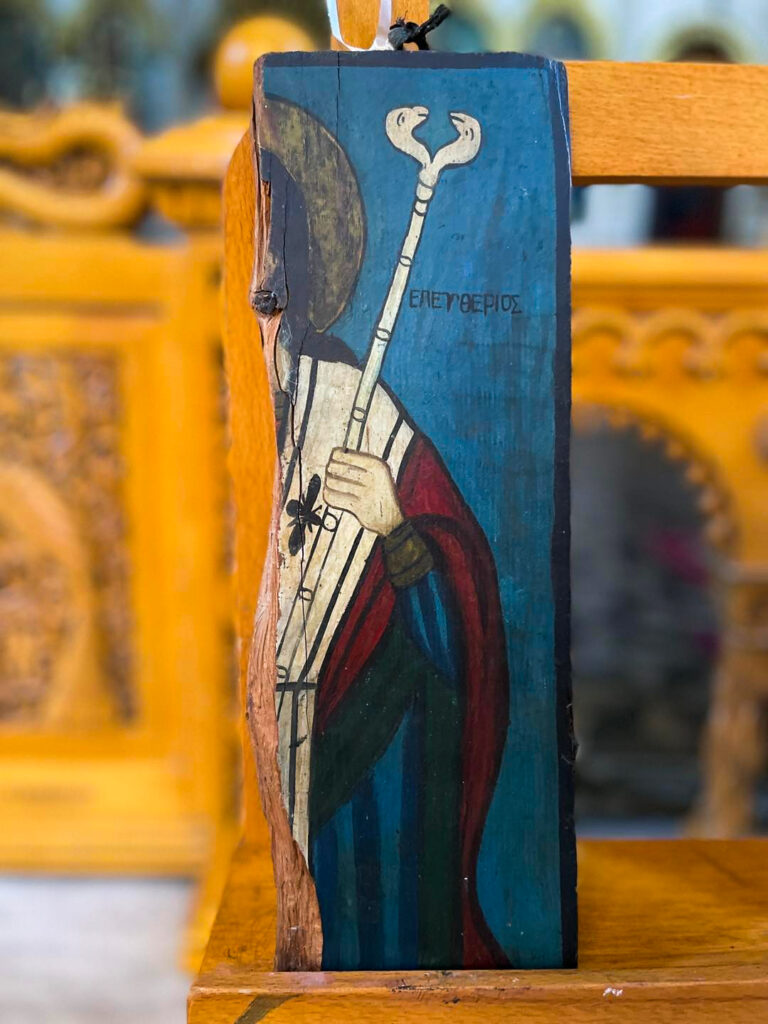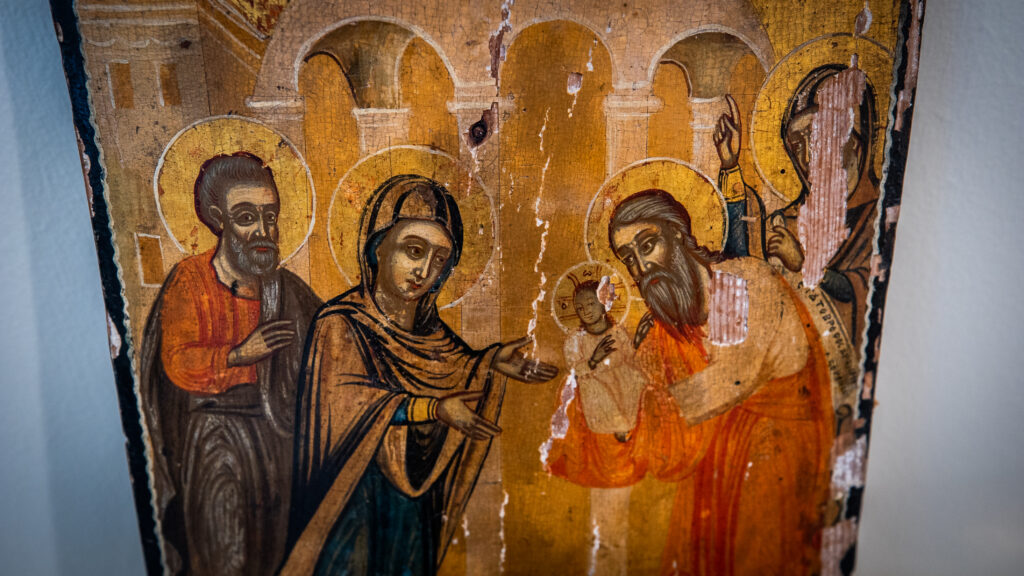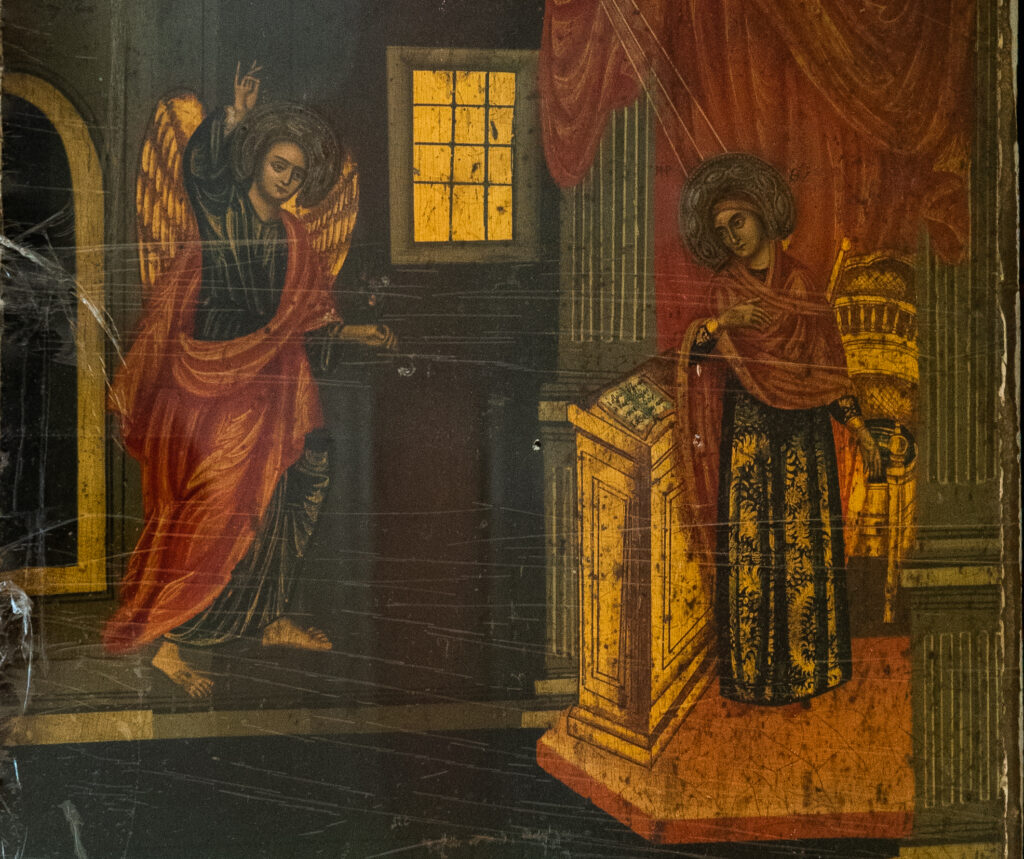
Half of an icon of Agios Eleftherios survives in Chania. We can see half the body of a saint dressed in blue, green, red and white holding a sceptre. The face of the saint is missing, but the name ‘Eleftherios’ remains. The wood on which the figure of the saint has been painted has been torn in half.

The family of Kyriakoula Moschou brought few items with them to Greece, mostly religious icons. Apart from carrying great value for their owners, these icons soon became symbols for the whole neighbourhood. They gave hope and instilled courage, helping the refugees cope with the hardships of their everyday life. The icons did not just stand for their faith in God, but were also symbols of the solidarity and the kindness that brought the neighbourhood’s residents together.

Pinelopi Kouvala brought many religious icons to Greece from Myriofyto, even some of substantial size. She donated most of them to a small monastery run by nuns near the family home in Kalamaria.

Georgios Trechas, along with his young son Dimitris, and Konstantinos Raspitsos met again at the makeshift refugee settlement of Drapetsona where they started over: new homes, new boats, new lives. A wooden icon of the Virgin Mary is one of the few belongings they brought with them.

Amid the makeshift shacks of Tampouria, Vasilis met Eleni Dimou from Chili on the Euxine Sea, another refugee who had arrived in Greece with her father and her two sisters. This icon of the Annunciation, originating either from Prokopi or Chili, holds immense sentimental value for their descendants.




